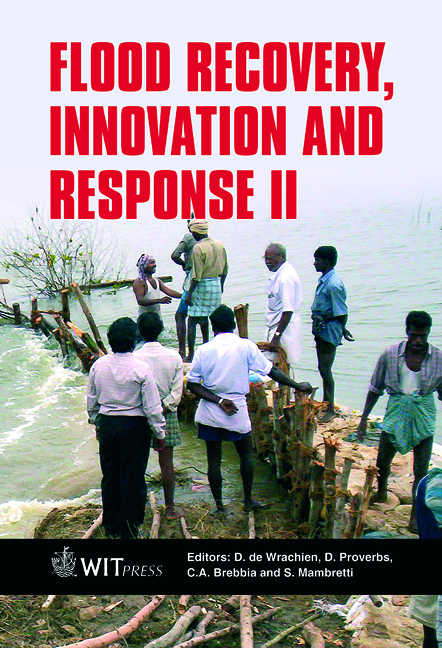The Impact Of Flooding On Transport Networks: Optimization Of Action Plans In A Decision Support Tool
Price
Free (open access)
Transaction
Volume
133
Pages
12
Page Range
215 - 226
Published
2010
Size
4,085 kb
Paper DOI
10.2495/FRIAR100191
Copyright
WIT Press
Author(s)
G. Morel & F. Hissel
Abstract
The OSIRIS-Inondation tool was created as part of the OSIRIS FP5-IST project and is now used by many French towns to generate a flood action plan for crisis preparation and delivery of operational support to the emergency services during crisis management or training phases. At present, the action plan is calculated on the basis of accurate information on available human and material resources, crisis scenarios, key facilities and the actions needed to protect the latter, while taking account of the direct, local impact of the flooding. However, the ability to correctly implement an action plan has never been analysed – notably in the event when a flooding closes down transport networks and thus prevents access (in full or in part) to the key facilities in question. The goal of the ACCEL project (funded by the Picardie Region in northern France) is to develop a method for calculating the accessibility of predetermined facilities and to integrate it into the OSIRIS platform. In order to address these issues, we developed an approach for (i) identifying the data required to calculate accessibility, (ii) cross-checking these data against flood scenarios, (iii) determining which sections of transport networks will be disrupted and (iv) calculating optimal itineraries to key facilities. Validation of this methodology in a case study of the Compiègne urban area (using ArcGIS software) enabled the development of a self-contained route-planning module for integration into OSIRIS action plans. Keywords: crisis management, accessibility, road disruption, emergency plans, decision support, systemic vulnerability.
Keywords
crisis management, accessibility, road disruption, emergency plans, decision support, systemic vulnerability





